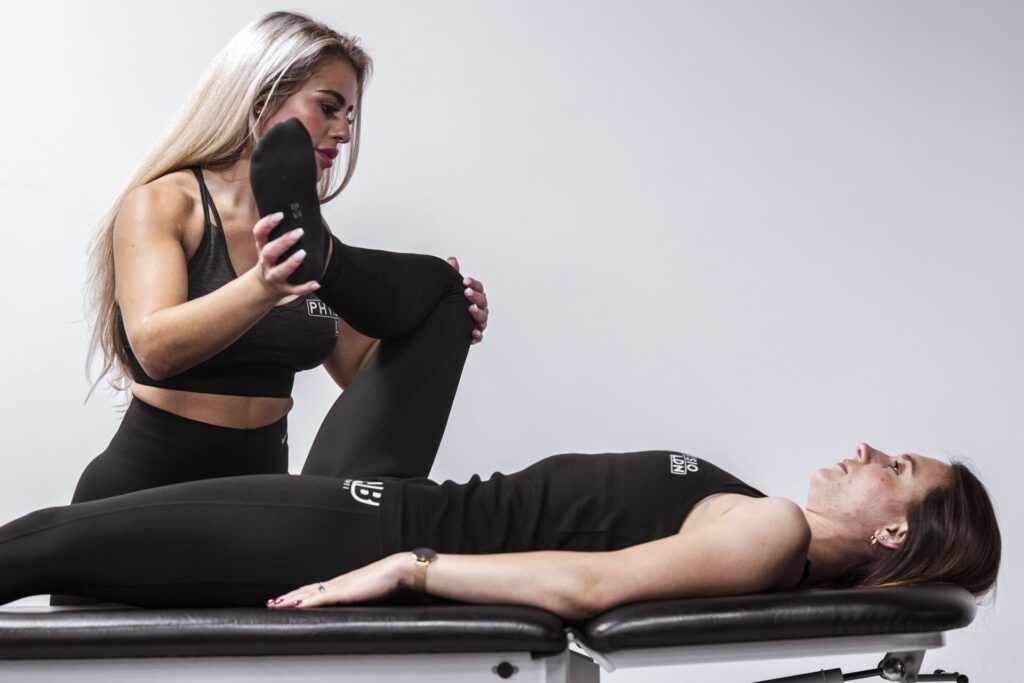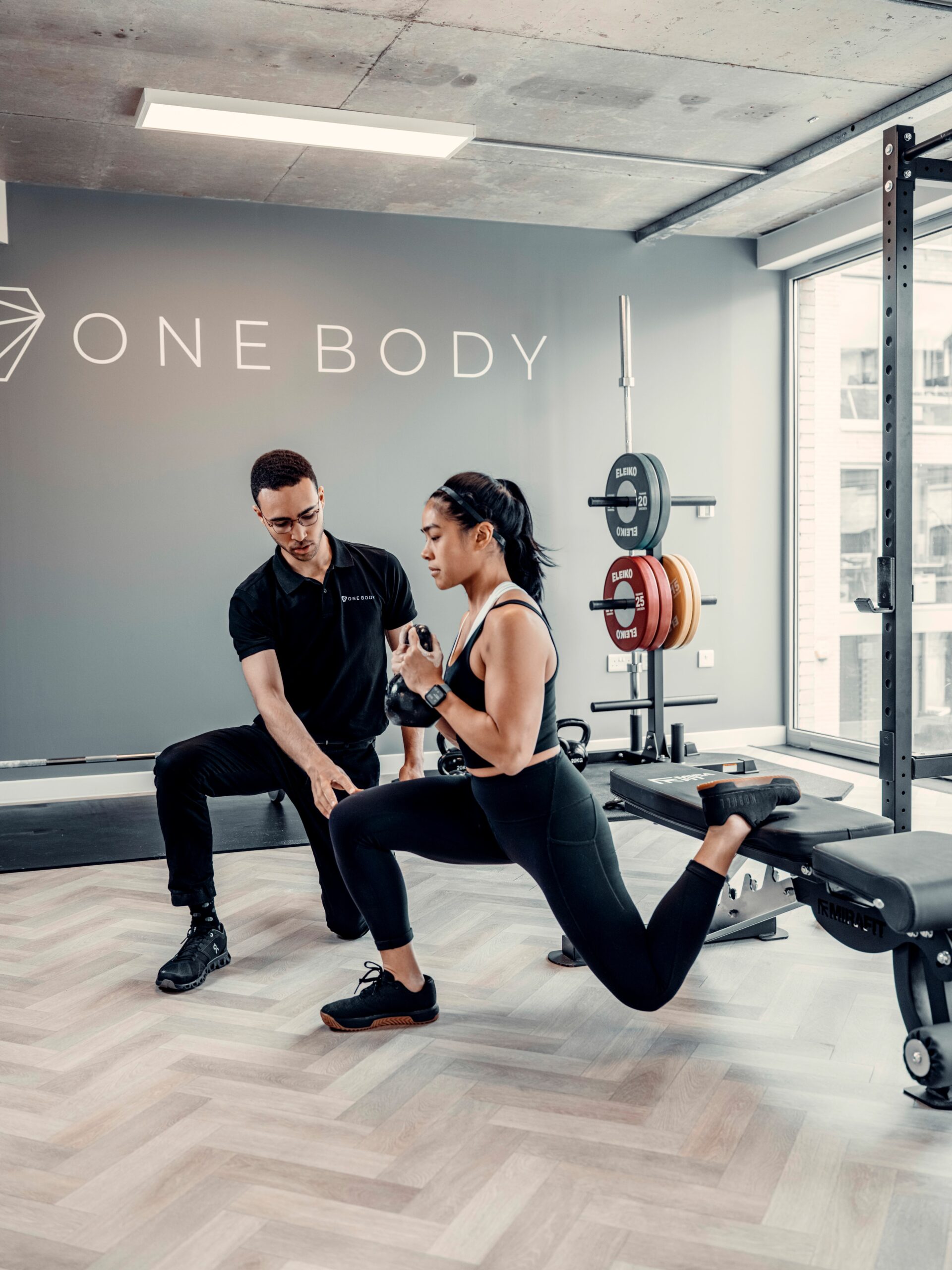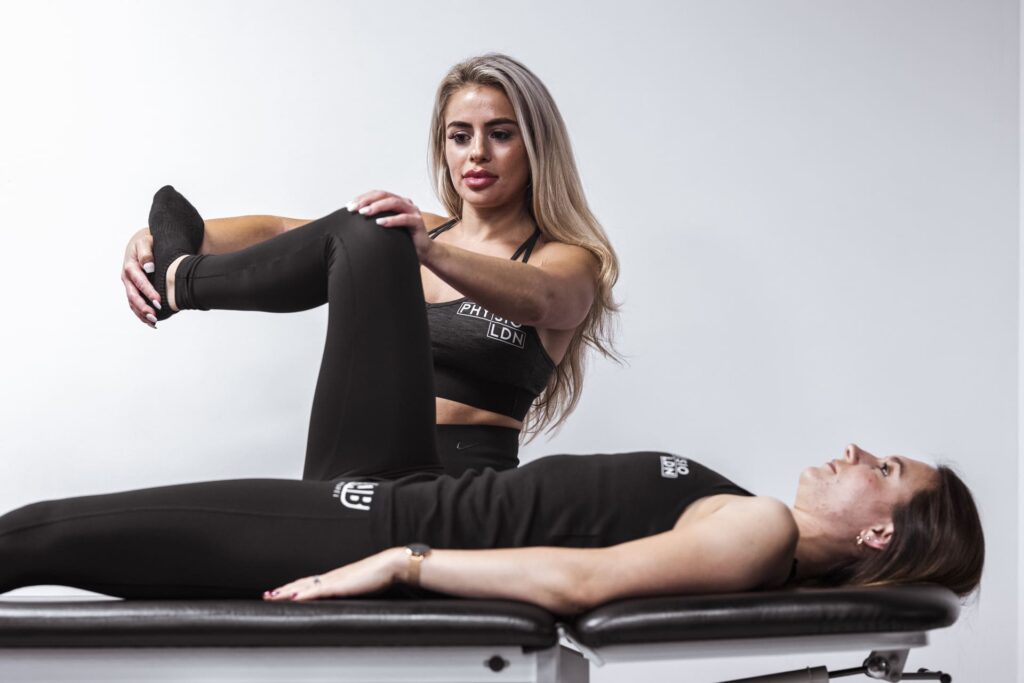Table of Contents
Main Takeaways
- Stair descent loads the knee more than ascent, stressing cartilage and soft tissues—especially with osteoarthritis.
- Good diagnosis = history, exam, and selective imaging; screen for fear-of-movement factors that amplify disability.
- First-line care: strengthen hip abductors, quads, hamstrings; add balance/proprioception and gentle mobility.
- Lifestyle tweaks—weight management, supportive footwear, handrail use, and environment fixes—reduce flare-ups.
- Conservative care (physiotherapy, activity modification, braces) first; surgery is for advanced or refractory cases.
Knee pain when descending stairs is a common complaint that affects people of all ages, but it is especially prevalent among those with knee osteoarthritis (OA) or other musculoskeletal issues. This discomfort can significantly impact daily life, making routine activities like using stairs increasingly challenging. Understanding why stairs trigger knee pain, effective exercises for support, and available treatments such as knee pain treatment in London, can help manage symptoms and improve mobility.
As Dr. Vandit Sardana, an orthopedic surgeon, explains, the cartilage cushion in our knees wears down over time, reducing shock absorption and making bending the knee during stair use painful. This article explores the causes of knee pain on stairs, exercises that can provide relief, and treatment options, with insights from recent studies and expert sources.
Why Stairs Trigger Pain
Stair descent places unique demands on the knee joint that can exacerbate pain, especially in individuals with underlying conditions like osteoarthritis. Walking down stairs exerts about 10% more force on the knees compared to ascending, increasing stress on the joint structures and cartilage (Central Ohio Spine and Joint).

One key factor is the gradual wearing down of the cartilage cushion in the knee. Cartilage acts as a shock absorber between bones, and as it diminishes, bending the knee to go up or down stairs becomes increasingly difficult and painful. This degeneration is often the hallmark of knee osteoarthritis, which commonly first presents with pain during weight-bearing activities involving knee bending, such as stair use — conditions frequently treated by specialist London knee pain physiotherapists.
Moreover, pain catastrophizing—where patients experience heightened fear and anxiety about pain—has been shown to significantly reduce stair climbing ability in knee OA patients. This psychological component can worsen perceived difficulty and disability (Clinical Rheumatology). Additionally, kinesiophobia, or fear of movement due to pain, rather than actual biomechanical changes, explains many self-rated difficulties in stair descent among OA sufferers (PM&R).
Soft tissue injuries around the knee can also flare during stair use, causing pain on the inside (medial) or outside (lateral) parts of the joint. These injuries contribute to discomfort and functional impairment during stair navigation (Dr. Vandit Sardana).
In addition to the physical challenges posed by stair descent, the role of muscle strength cannot be overlooked. Weakness in the quadriceps and hamstrings can lead to inadequate support for the knee joint, making it more susceptible to pain during activities that involve bending and weight-bearing. Strengthening these muscle groups through targeted exercises can help alleviate some of the stress placed on the knee during stair climbing and descending. Physical therapy often emphasizes this aspect, providing patients with tailored regimens to enhance muscle function and joint stability.
Furthermore, environmental factors such as stair design and surface material can also play a significant role in the experience of knee pain. Stairs that are steep, narrow, or poorly lit can increase the risk of missteps and falls, which may exacerbate existing knee issues. In addition, surfaces that are slippery or uneven can lead to additional strain on the knee joint as individuals may instinctively adjust their movements to maintain balance. Understanding these external influences can be crucial for individuals with knee pain, as modifications to their environment may lead to improved safety and comfort when navigating stairs.
Best Exercises for Support
Strengthening specific muscle groups around the hip and knee can provide crucial support and reduce pain when using stairs. Research indicates that patients with early-stage knee OA who experience pain descending stairs often have significantly reduced hip abductor muscle strength (Clinical Rheumatology).

Targeted exercises focusing on the hip abductors, quadriceps, and hamstrings can improve joint stability and movement mechanics. For example, side-lying leg lifts, clamshells, and resisted band walks help strengthen hip abductors, while squats and step-ups can build quadriceps strength. These exercises not only support the knee joint but also help distribute forces more evenly during stair descent.
In addition to strength training, flexibility exercises and gentle range-of-motion movements are essential to maintain joint mobility and reduce stiffness. Incorporating balance and proprioception exercises can also improve coordination and reduce the risk of falls on stairs. Activities such as single-leg stands, yoga, or tai chi can enhance body awareness and stability, making it easier to navigate uneven surfaces and stairs.
London knee pain physiotherapy clinics , such as One Body LDN, offer tailored exercise programs combining deep tissue massage and rehabilitation exercises to address the root causes of knee pain and enhance stair navigation ability. These clinics often employ advanced techniques, including gait analysis and personalized workout regimens, ensuring that each patient receives the most effective treatment for their unique condition.
Moreover, understanding the biomechanics of stair climbing can further inform exercise choices. For instance, the act of descending stairs places a significant load on the knee joint, necessitating strong hip and thigh muscles to absorb impact and control movement. Engaging in plyometric exercises, like box jumps or stair hops, can also build explosive strength and improve the overall functionality of the lower body. This not only aids in everyday activities but also enhances athletic performance for those involved in sports.
Treatment and Management
Managing knee pain when going down stairs requires a multifaceted approach involving physical therapy, pain management, and sometimes medical interventions. Early assessment by a qualified physiotherapist can identify the specific causes of pain and dysfunction, allowing for a bespoke treatment plan.
Hands-on treatments such as deep tissue massage, joint mobilization, and trigger point release can reduce muscle tightness and improve joint mobility. These techniques are often combined with exercise therapy to restore strength and function. Clinics like One Body LDN in London specialize in such integrated approaches, offering award-winning physiotherapy and sports massage services. The use of modalities such as ultrasound therapy or electrical stimulation may also be incorporated to further enhance recovery, providing pain relief and promoting tissue healing.
For patients with osteoarthritis, weight management and lifestyle modifications are also crucial to reduce joint load. Pain relief medications and supportive devices like knee braces may be recommended in some cases to alleviate symptoms during stair use. Additionally, incorporating low-impact exercises such as swimming or cycling can help maintain cardiovascular fitness while minimizing stress on the knees. Nutrition plays a role too; a diet rich in anti-inflammatory foods, such as omega-3 fatty acids found in fish and antioxidants from fruits and vegetables, can support joint health and overall well-being.
Psychological factors, such as fear of movement and pain catastrophizing, should not be overlooked. Cognitive-behavioral strategies and patient education can help address these issues, improving confidence and functional capacity on stairs (PM&R). Support groups or counseling may also be beneficial, providing a platform for patients to share their experiences and learn coping strategies from others facing similar challenges. Understanding the nature of their condition can empower individuals, making them more proactive in their treatment and rehabilitation.
In severe cases, surgical options such as knee replacement may be considered, but conservative management remains the first line of treatment for most individuals experiencing knee pain on stairs. It’s essential for patients to have ongoing discussions with their healthcare providers about their progress and any changes in symptoms, as this can lead to timely adjustments in their treatment plans. Regular follow-ups can ensure that the chosen management strategies remain effective and that patients feel supported throughout their recovery journey.
Frequently Asked Questions (FAQs)
Why does my knee hurt more when going down stairs than going up?
Descending stairs places about 10% more force on the knees compared to ascending, which increases stress on the joint and cartilage. This added load can exacerbate pain, especially if the cartilage is worn down or if there are soft tissue injuries around the knee (Central Ohio Spine and Joint). The mechanics of descending stairs involve a greater degree of knee flexion, which can further strain the patellar tendon and surrounding ligaments. Individuals with conditions such as patellofemoral pain syndrome may find this motion particularly uncomfortable, as it can lead to increased pressure on the kneecap against the thigh bone, resulting in heightened discomfort.
Can exercises really help reduce knee pain on stairs?
Yes, strengthening muscles around the hip and knee, particularly the hip abductors and quadriceps, can improve joint stability and reduce pain. Tailored physiotherapy programs that combine strength, flexibility, and balance exercises have been shown to enhance stair climbing and descending ability (Clinical Rheumatology). Additionally, incorporating low-impact activities such as cycling or swimming can further enhance muscle endurance without putting excessive strain on the knee joint. Regular practice of these exercises can lead to improved proprioception, which is the body’s ability to sense movement and position, ultimately aiding in better navigation of stairs and reducing the risk of injury.
What role does fear of pain play in knee pain during stair use?
Fear of pain or movement (kinesiophobia) and pain catastrophizing can significantly affect how patients perceive their ability to use stairs. These psychological factors can lead to reduced activity and increased disability, independent of the physical severity of the knee condition (Clinical Rheumatology, PM&R). This fear can create a vicious cycle where avoidance of stair use leads to muscle atrophy and decreased joint function, further exacerbating the pain experience. Cognitive-behavioral strategies, such as gradual exposure to stair climbing and mindfulness techniques, can help break this cycle, allowing individuals to regain confidence in their movement and reduce the fear associated with pain. For detail information see the blog knee pain after fall.
When should I see a physiotherapist for knee pain on stairs?
If knee pain is persistent, worsens with stair use, or limits your daily activities, it is advisable to seek professional assessment. Early intervention by a physiotherapist can help identify the root cause and provide effective treatment to prevent chronic issues. They can also tailor a rehabilitation program that addresses specific weaknesses or imbalances in the lower extremities, ensuring a comprehensive approach to recovery. Furthermore, physiotherapists can educate patients on proper stair navigation techniques, which can significantly alleviate stress on the knees during everyday activities.
Are there any non-surgical treatments effective for knee osteoarthritis-related stair pain?
Yes, conservative treatments including physiotherapy, exercise, weight management, pain relief medications, and supportive devices are effective in managing symptoms and improving function. Surgery is generally reserved for advanced cases where conservative measures fail. In addition to these methods, alternative therapies such as acupuncture and the use of topical analgesics may provide additional relief. Patients are often encouraged to explore a multi-faceted approach, combining various treatments to enhance their overall quality of life and maintain mobility.
Can deep tissue sports massage help with knee pain?
Deep tissue sports massage can relieve muscle tightness, improve circulation, and reduce pain around the knee joint. When combined with physiotherapy exercises, it supports recovery and enhances mobility, making it a valuable part of knee pain management (One Body LDN). This type of massage focuses on realigning deeper layers of muscles and connective tissue, which can help alleviate tension that contributes to knee discomfort. Regular sessions can also promote relaxation and decrease stress levels, which is beneficial for overall pain management and recovery.
Take the First Step Towards Pain-Free Stairs with One Body LDN
If knee pain is turning every staircase into a challenge, it’s time to address the root cause with One Body LDN, voted as the best London physio clinic. Our award-winning team of physiotherapy experts is dedicated to providing you with a precise diagnosis and a tailored rehab plan that blends exercise rehabilitation and deep tissue massage. Specializing in musculoskeletal physiotherapy and sports injuries, we cater to everyone from corporate office workers to elite athletes. Don’t let knee pain limit your mobility or become a long-term issue. Book your free initial assessment at our clinic today and experience instant pain relief and a path to feeling amazing.


